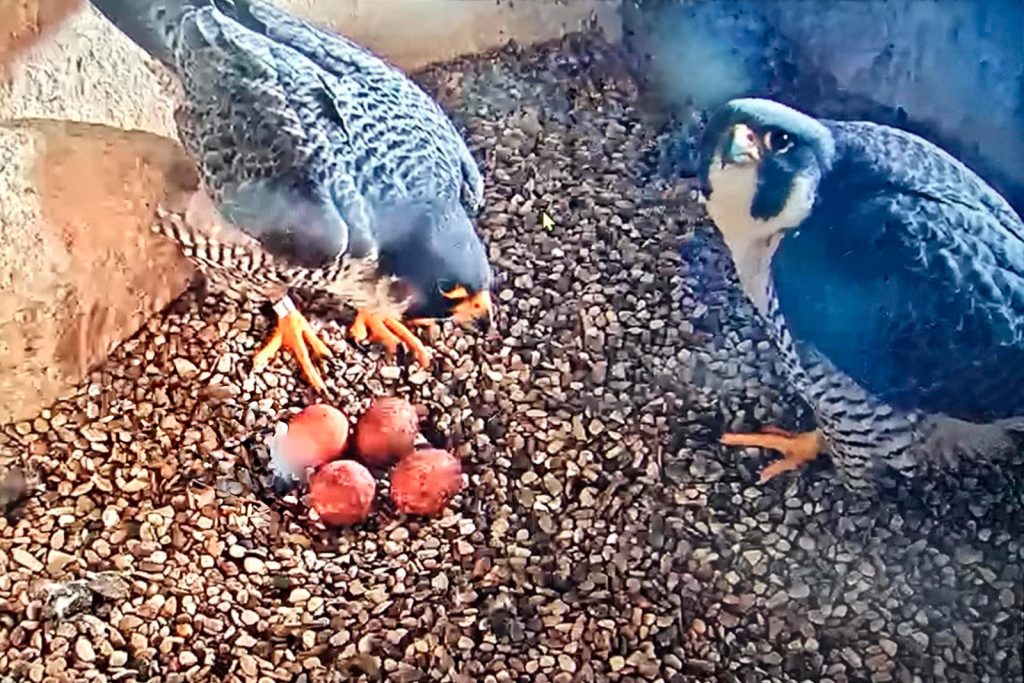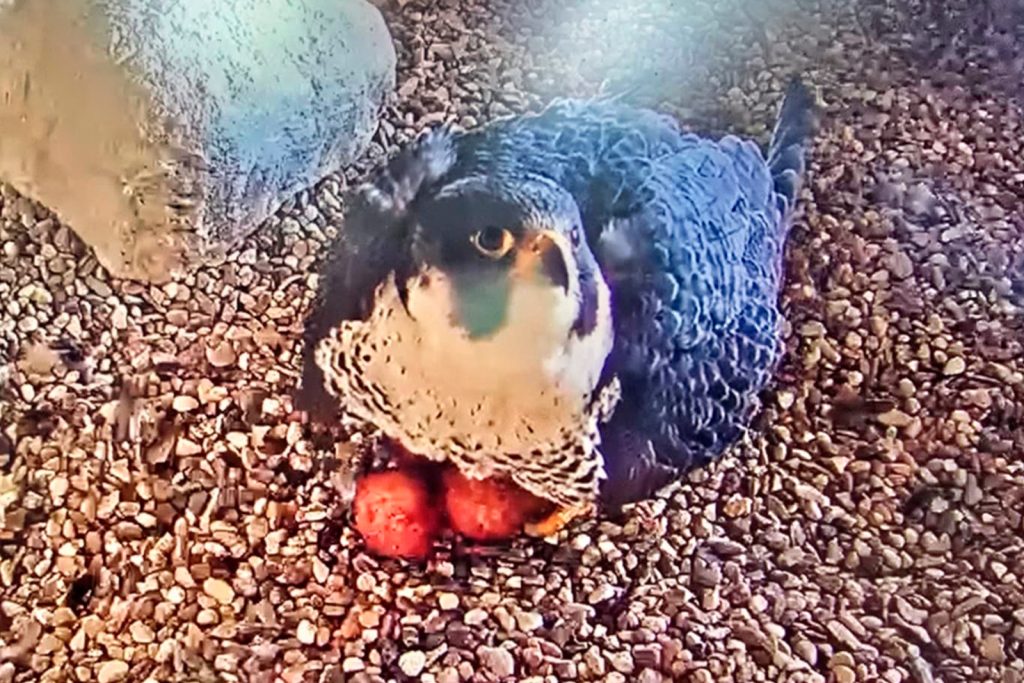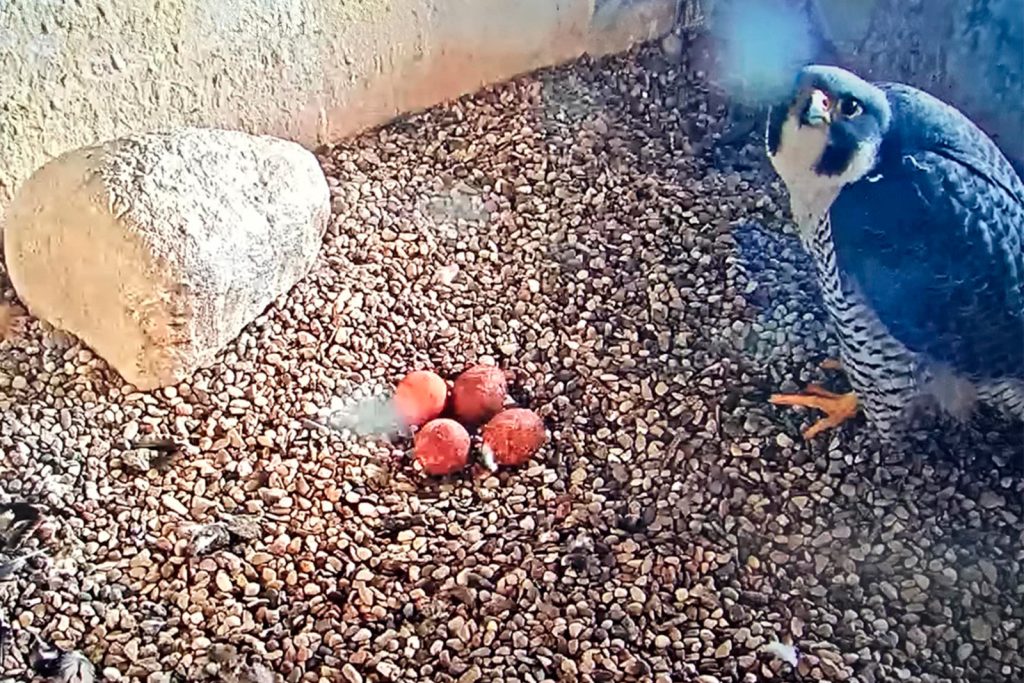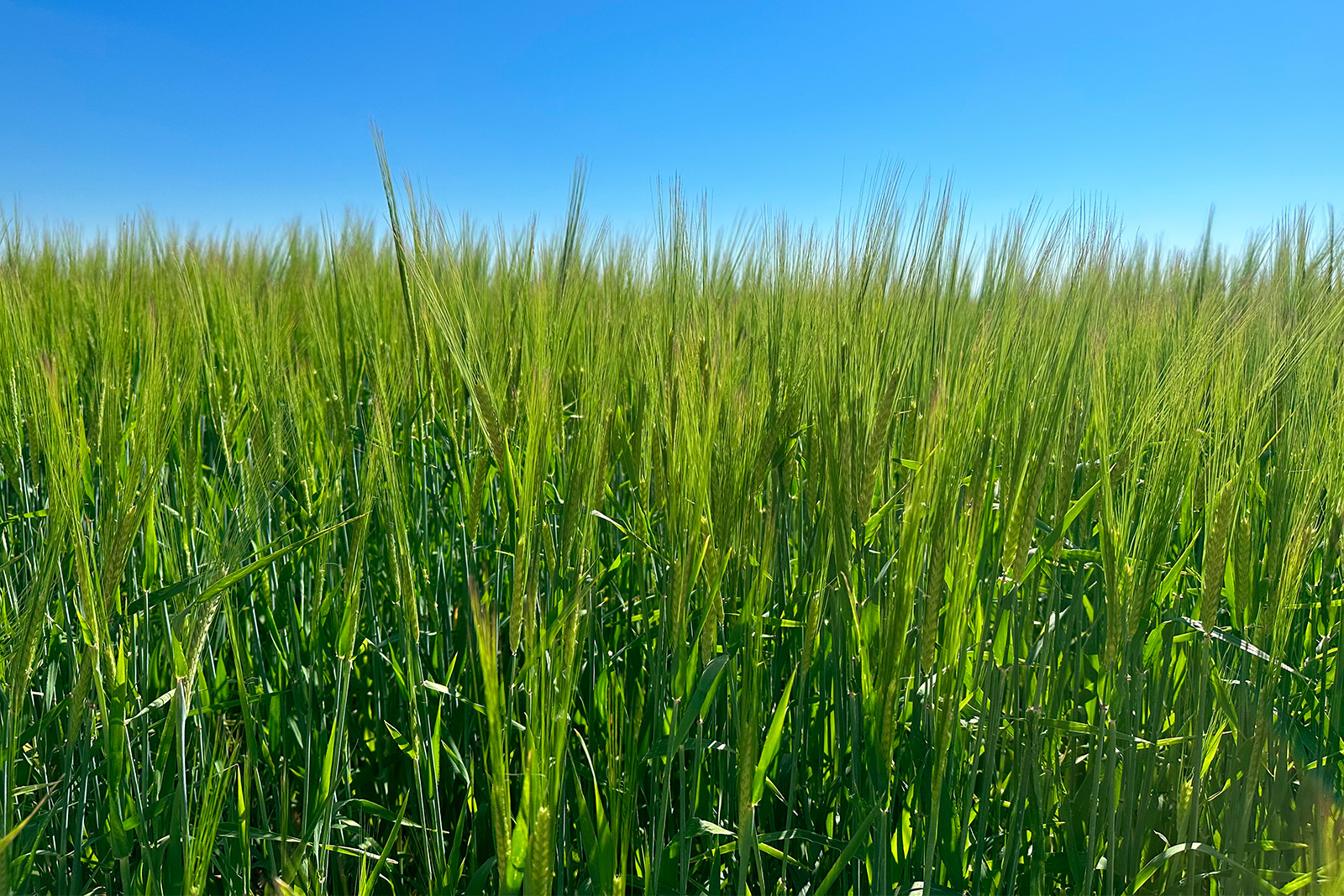
Some things in the natural world can be counted on to happen at the same time every year. It makes me think of Canadian geese following their migratory path in the spring and fall, salmon going upstream to spawn (and getting pulled out of the water by grizzly bears!), and large mammals shedding their winter coats in the spring.
In eastern Wisconsin, one thing we count on every spring is the return of a pair of Peregrine Falcons to the nesting box on the 11th Floor of the grain elevator at our Manitowoc, WI, malt plant. This year, we again welcome a familiar pair to the nesting box. Male Bartell has returned for his ninth year, and an unbanded female is back for her sixth year. This is not uncommon since falcons normally mate for life. Other than mating season, falcons normally live alone and are solitary hunters.
Briess’ nesting box has a live Falcon Cam, so you can watch as we wait for the eggs to hatch. Check it out:
https://about.briess.com/sustainability-program/falcon-recovery-program

On the Falcon Cam, you’ll see the female and male taking turns warming/guarding the eggs. The baby falcons, known as eyasses, will be born around Mother’s Day. After that, the nesting box becomes very active as the parents regularly return with food for the eyasses. The eyasses will be banded when they are about one month old so their activity and locations can be tracked over time as part of Wisconsin’s Falcon Recovery Program. There are approximately 40 nesting boxes around the state supporting the species’ comeback.

Maybe you’re thinking, “What else about falcons makes them such fascinating creatures?” Well, I’m glad you asked because they are pretty amazing. Here are some things you may not know about Peregrine Falcons:
- It’s estimated there are 40,000 in North America and 140,000 in the world, according to the American Bird Conservancy
- The word Peregrine comes from the Latin word peregrinus, which means “to wander”, reflecting their nomadic lifestyle
- Falcons live on every continent except Antarctica, with habitats including cities, shorelines, deserts, and tundra
So, no matter where you are, you may be able to look up in the sky during the next several months and see one of these majestic birds in flight. Life Is Good!


